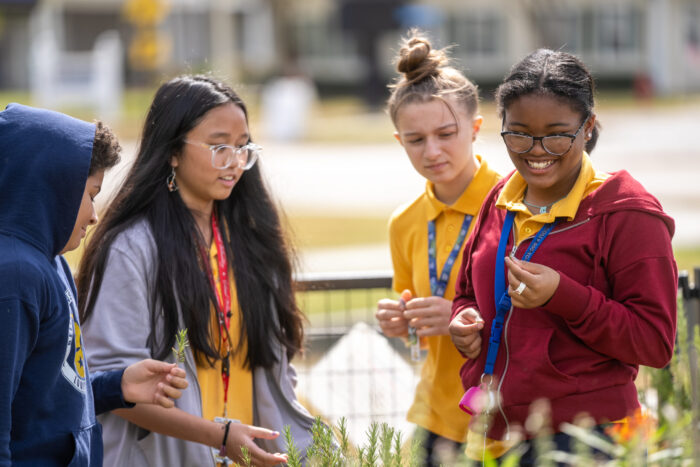
The Link Between Food Education and Social-Emotional Learning (SEL)
At Emeril Lagasse Foundation, we’ve seen time and again how food education helps students blossom far beyond academics. Cooking and gardening education builds patience, encourages teamwork and sparks confidence.
Whether sharing recipes or harvesting herbs, students are learning something deeply personal: how to understand and express who they are. This is the heart of social-emotional learning (SEL).
What is social-emotional learning?
Social-emotional learning is the process through which children develop social and emotional skills, like understanding and managing emotions, setting goals and building healthy relationships. SEL plays a key role in creating safe, supportive learning environments and shaping lifelong success.
The Child Mind Institute outlines the five core competencies of SEL as:
- Self-awareness
- Self-management
- Social awareness
- Relationship skills
- Responsible decision-making
When these skills are nurtured early and consistently, students show improved academic performance, stronger behavior and classroom participation, and healthier relationships.
Where does food education fit into SEL?
Food is personal. It connects us to our families, cultures, environments and each other, making it a natural setting for social-emotional growth. In gardens and kitchens, students practice SEL not as a lesson but as a lived experience.
Students gain confidence through cooking.
Mastering a recipe — chopping vegetables, reading measurements, tasting the results — gives students a clear sense of accomplishment. For many, especially students who struggle in traditional classrooms, the kitchen becomes a space where they feel capable and proud. Over time, that confidence translates beyond the stovetop.
Students hone teamwork in the garden.
Tending a garden takes collaboration. School gardens provide consistent opportunities for students to work together toward a shared goal, developing communication skills, compromise and respect in the process.
Students learn mindfulness at mealtime.
Harvesting, prepping and sharing a meal helps students slow down and become more present. They learn to appreciate the journey of their food and reflect on how it makes them feel. These moments can support self-regulation and emotional awareness.
Students build empathy through food culture.
When students share recipes from home or explore global food traditions, they begin to see the world through each other’s eyes. Food education for youth opens the door to conversations about identity, heritage and understanding to build empathy one bite at a time.
Real-Life Impact Through Culinary Gardens and Teaching Kitchens
In Emeril’s Culinary Garden & Teaching Kitchen, SEL is more than a benefit. It’s embedded in each lesson. Educators report that students gain confidence, practice collaboration, and become more engaged learners. For some children, it’s the first time they’ve felt ownership of a project or pride in a final product they can share.
For example, one third-grade student at DC Bilingual Public Charter School shared their joy in seeing their hard work in the garden pay off: “Harvesting sweet potatoes is like digging for treasure that we get to eat!”
These moments may seem small, but their ripple effects are profound. As students begin to see themselves as leaders, caretakers and contributors to their community, their impact will be great.
Let’s Lay the Groundwork for Healthy Futures
Social-emotional learning and food education go hand in hand. Emeril’s Culinary Garden & Teaching Kitchen provides schools with a cooking and gardening curriculum, aligned with national academic standards, that promotes SEL and student well-being. Learn more about Emeril’s Culinary Garden & Teaching Kitchen and how you can bring this program to your school.